

Strength is one of the three moral virtues recognized since Antiquity, appearing in the writings of Plato and Aristotle, and spanning centuries through Saint Louis and Thomas Aquinas. This virtue has always been associated with courage in the face of danger, an essential quality for a soldier on the battlefield.
Strength also represents an unshakable spirit capable of enduring adversity and persevering in difficult times. Aristotle, in his Nicomachean Ethics, teaches that virtues lie in a middle ground between two extremes. Thus, Strength is found between cowardice (fleeing or giving up in the face of difficulties) and recklessness (an excess of courage that can lead to imprudent actions).
The allegorical representation of Strength has varied over time. It is often symbolized by a woman accompanied by a lion or holding a pillar. These images are rich in mythological and religious references:
In the Bible, Samson, hero of the Book of Judges, is described as the strongest man in the world. He confronted the Philistines with his superhuman strength. A famous episode tells that he killed a thousand Philistines with a donkey's jawbone. But his strength lay in his long hair, a secret his mistress, Delilah, revealed to his enemies. After being captured and humiliated, Samson, whose hair had grown back, caused the temple of Dagon to collapse by pushing its pillars, sacrificing himself for ultimate vengeance.
Another biblical story recounts that Samson killed a lion with his bare hands, reinforcing his image as a strong man dominating the wild forces of nature.
Hercules, hero of Greek mythology, embodies another facet of Strength. Gifted with exceptional power, he sometimes faced the consequences of his own excess. For example, as a young man, he killed his music teacher, Linus, in a fit of rage. Later, under the madness inflicted by the goddess Hera, he killed his own family, an act that led him to undertake the famous Twelve Labors to atone for his sin.
The first of these labors, killing the Nemean lion, is particularly significant. This lion, invulnerable to weapons, was defeated by Hercules with his bare hands, illustrating raw yet controlled Strength. The lion's skin became a symbol of protection and invincibility, often depicted in art with Hercules wearing it over his shoulders.
In the Tarot of Marseille, the Strength card is often depicted as a woman taming a lion, an image combining gentleness and control. This symbol illustrates the idea that true Strength is not only physical but also internal. It lies in the ability to channel violent impulses and transform them into constructive energy.
The Strength card thus invites reflection on the balance between raw power and self-mastery, a universal lesson through the ages.
Strength is one of the four cardinal virtues. These virtues are: prudence, temperance, strength, and justice. Known and praised by philosophers before Christianity, they form, with the three theological virtues (faith, hope, and charity), the seven cardinal virtues.
The cardinal virtue of Fortitude, also called Strength or Courage, was often personified by a female figure endowed with symbolic attributes:
Among famous examples of these representations are:
The Italian Visconti tarot offers two variations of the Strength card. In the first, a woman opens or holds a lion’s mouth barehanded, while in the second, a man wields a wand, ready to strike a lion. These representations reinforce the idea that the presence of a lion becomes a recurring symbol to represent Strength. This iconographic link seems to have been established during this period and continues in later tarots.
In the Budapest tarot, also known as the Budapest Sheet, the card does not show a woman but a man controlling the lion’s mouth. This recalls the myths of Hercules or Samson, where physical strength triumphs over trials. This iconographic choice departs from the classic representation of cardinal virtues to focus more on mythological narratives.
In other tarots of the same period, such as the Rosenwald tarot, the card illustrates the other classical representation of Strength: the pillar. The character is no longer a man but a woman. This transition highlights an allegorical representation, where the woman becomes a symbol of the cardinal virtue of Strength. She is often depicted with a halo or aura above her head, emphasizing her allegorical nature and her role among the cardinal virtues.
In the Charles VI tarot, the representation of Strength becomes more explicit through the use of color. A woman, surrounded by a dark halo around her head, clearly embodies an allegorical figure. This detail confirms her role as a cardinal virtue. A notable difference in this version is the state of the column: it is broken, symbolizing superhuman strength and the ability to overcome obstacles. This evolution contrasts with the Rosenwald tarot, where the column remained intact, serving simply as support.
The anonymous Parisian tarot of 1615 is a precursor to the Marseille tarot, although it still belongs to the French tarot tradition. It predates models like the Vachier tarot of 1639 and the Noblet tarot of 1650. This tarot is notable for a unique depiction of Strength: a woman controlling a lion while interacting with a broken column. The scene shows a column base on the ground and a fragment on which the woman places her foot. This combination of elements emphasizes both the mastery of instincts (symbolized by the lion) and resilience in the face of adversity (represented by the broken column).
In this section, we will discuss a specific feature of the Strength card in the tarot of Jean Noblet. Although this interpretation is not widespread, it seems relevant to raise the following question: Did Jean Noblet really draw a lion on his Strength card, or could it be a bear? This hypothesis is worth considering, even if it is subject to debate.
One of the elements leading me to this reflection is the shape of the animal’s mouth. Indeed, the animal depicted seems to have a mouth closer to that of a bear than a lion. Notably, its ears are round, unlike those of a lion, which are more pointed. It is interesting to note that Jean Noblet, a learned man and a highly skilled engraver, was familiar with the appearance of a lion. In his World card, he draws a lion with a clearly defined mane. Comparing this lion to the animal in the Strength card of the same tarot, we can see a difference in the depiction of the animals.
However, it is important to clarify that I do not make this hypothesis an assertive claim. I do not categorically state that the animal drawn by Noblet is a bear rather than a lion. It is a thought worth sharing but not an absolute conclusion.
On the other hand, an undeniable and undisputed element concerns the hat worn by the Strength figure. It is particularly strange, combining the appearance of a crown and wings. This detail draws attention, as it could be interpreted as a symbol of divine power or spiritual sovereignty. This peculiarity of the hat would be taken up and integrated into the canonical form of the Marseille tarot. It is found in all Type 2 tarots, notably with the tarot of Pierre Madenié (1709), the tarot of Convert, and even in the tarot of Paul Marteau, known as the Grimaud tarot of 1930.
With the card of Jean Noblet, we already have a representation of "Strength" dating back to 1650, which was relatively fixed and definitive in its appearance. From then on, the canonical form of "Strength" did not evolve much in the Tarot of Marseille. However, what can be noted as an addition in Type II is the presence of the bare foot of "Strength," which appears for the first time in Madenié's deck in 1709. This detail can refer to several symbolic meanings.
The bare foot could suggest a connection to the earth, to the idea of drawing strength and power from Mother Earth. There may also be a sense of humility and simplicity in this gesture, as "Strength" walks barefoot. Beyond grounding, the idea of the bare foot might also symbolize freedom, the freedom to shed constraints and move at will. However, it is true that in Western culture, walking barefoot can also be seen as a symbol of weakness or poverty. This detail added by Madenié seems somewhat ambiguous in its intent and meaning. It is not certain that this was his best addition to the tarot.
Another interesting element is the foot of "Strength," sometimes depicted with six toes instead of five. There are several theories about the meaning of this peculiarity. Historically, I am rather convinced that these six toes are primarily a mistake in engraving or a lack of precision in the engraver's gestures. I doubt that, at the time, engravers deliberately intended to depict a foot with six toes.
However, as often happens in the history of tarot, occultists and esotericists may have interpreted this anomaly as having hidden meaning. They might have sought to give it particular symbolic value. But, in my view, this phenomenon is part of a tendency sometimes seen in tarot interpretation, where cards are overanalyzed. People try to attribute excessive richness or complexity to them, perhaps thinking this confers greater universality. Yet, it seems to me that French master craftsmen of the Renaissance favored a simpler, more straightforward approach. With a young woman holding open the mouth of a lion and wearing a hat that is both a crown and bird wings, there is already much to interpret. I am not sure it is necessary to add a bare foot, let alone a foot with six toes.
When the Tarot of Marseille was exported to Italy in the 18th century, a new representation of the lion appeared. In these versions, the lion raises a paw as a sign of resistance, marking a significant difference from the traditional depiction. An example of this variant can be seen in Strambo's card, where the hat of "Strength" forms an infinity symbol. This idea may also be present in the Tarot of Milan, where the woman keeps her feet bare. It might be in these later versions that the idea begins to emerge, which Arthur Waite would later interpret, of the hat of "Strength" as an infinity symbol. He would incorporate this interpretation into his own deck.
Personally, I think that in the oldest cards, the hat did not symbolize infinity. On the contrary, it seems to me that it was simply a representation of the typical hat from Italian folklore of the time, which was wide to shield the head from the sun and could undulate.
The French occultist and ceremonial magician Eliphas Lévi associated this card with the Hebrew letter Chet and the idea of a grasping hand, holding on to something. He envisioned this card as a woman wearing a symbol of infinity on her head, effortlessly closing the jaws of a raging lion. This represents a beginning to manifest the taming of the lion with gentleness.
Oswald Wirth, who designed the card shown here on the right, followed the Marseille tarot model by depicting the woman opening the jaws of the lion. His interpretations of the cards lean more towards the psychological, emphasizing self-control, where one strives to master their lower nature. The lion represents antisocial and wild energy that should not be violently suppressed. Instead, it should be consciously handled and transformed into noble and constructive energy.
The Rider-Waite-Smith card, represented here, closely adheres to Eliphas Lévi's description, with a woman wearing a symbol of infinity on her head and closing the mouth of a lion. It is a peaceful scene where the struggle between the woman and the lion has been resolved. The lower nature, symbolized by the lion, has been tamed by the spiritual power of the higher self.
For Arthur Waite, the Strength card is the eighth major arcana, rather than the eleventh as in the Marseille tarot. The Justice and Strength cards were therefore switched between the Marseille tarot and the Rider-Waite-Smith tarot. Thus, in the secret society of the Golden Dawn, when assigning Hebrew letters to the cards with their astrological associations, Libra falls in the 11th position, and Leo in the 8th. By changing the order of the cards compared to the Marseille tarot, the Justice card was assigned to Libra and the Strength card to Leo.
What is interesting here is that we see a black man who could symbolize a possibly dark, repressed, or unhealthy aspect of our individuality. He potentially represents our shadow side, that part of ourselves we may tend to ignore or suppress. This man controls the mouth of a creature that seems fundamentally aquatic, not feline, pointing to a deep-sea creature like a Leviathan or Kraken. The man is literally looking into the creature's throat, as if he wants to probe the depths of his being. This could symbolize the idea that true strength also lies in the ability to explore the deepest, darkest parts of ourselves, to face and understand our internal shadows. In this way, this interpretation aligns with the card THE MOON.
In this version, the card is divided into two parts. In the upper square, we see a young woman, beautiful and calm, with very long hair reminiscent of a lion's mane. She sits peacefully by the water's edge. In the lower square, we find the body of water, likely a lake, where the young woman is sitting. In the water's reflection, a lion is lying nonchalantly, but its mouth is open as if roaring or expressing some form of anger or aggression. This lion, appearing in the reflection, could symbolize the inner dimension of the young woman, who externally seems peaceful and gentle but harbors a wild beast within.
This image is very intriguing because it invites us to reflect on the strength represented by the ability to control the wild beast living within us. The young woman appears calm and serene, but her reflection shows an angry lion. This can be interpreted as a metaphor for the inner struggle between our peaceful nature and the wilder emotions or instincts we carry. True strength may lie in the ability to accept, understand, and master this inner duality, to integrate both gentleness and power within ourselves.
In this modern version, we see a young woman with a face that is half human, half lion. This hybrid figure represents the duality between human and animal nature. She wears a necklace with a pendant that could be heart-shaped, and an infinity symbol is tattooed on her arm. She holds a young lamb under her arm, like a precious treasure. Here, the creator seems to show that the woman is not a warrior dominating a lion, as in the Marseille Tarot tradition, but rather a young woman who carries this "wild beast" aspect within herself. The lion, subdued by the woman, symbolizes inner drives, those animalistic forces we all carry within.
It is important to note that the creator wants the lion to be perceived as an inner dimension, a representation of our primal instincts. The presence of the lamb could symbolize gentleness and inner peace, but it also adds an element of ambiguity to the card. While the lamb is often associated with purity and innocence, it might seem overly childlike in this context. However, its role could be to illustrate the expression "gentle as a lamb."
In the background, we also see the constellation of Leo, further emphasizing the duality between human and animal nature and the influence of the zodiac on our inner evolution.
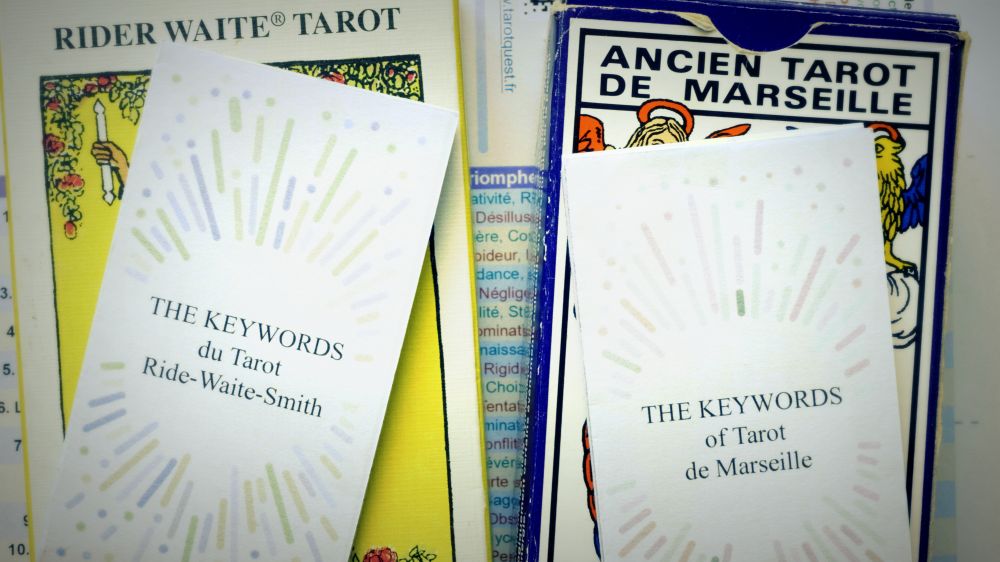
Key words for the 78 cards for the Tarot of Marseille and the Rider-Waite-Smith, to slip into your favorite deck. Your leaflets always with you, at hand, to guide you in your readings. Thanks to them, your interpretations gain in richness and subtlety.
The Strength card does not simply speak of courage or tenacity. In fact, it addresses self-control. It is perhaps one of the most explicit cards in the Tarot of Marseille, as it clearly indicates that the real challenge is not to subdue or dominate the "beast" within us but to understand and integrate this primitive dimension. Strength here is not about crushing or suppressing our instincts but mastering them with wisdom and discernment.
The Strength card is number 11 in the Tarot of Marseille, placing it at the beginning of the spiritual cycle, while the cards from 1 to 10 are part of the earthly cycle. In the Fool’s journey, Strength symbolizes the entry into the spiritual path. It teaches us that the goal of this journey is first self-mastery, especially of the uncivilized and repressed parts of ourselves. This card invites us to accept our instincts, our shadow parts, and to learn to control them rather than repress or ignore them.
The spiritual path we follow after this card, with the subsequent cards (from the Hanged Man at 12 to Judgment at 20), shows us how to master this part of ourselves. Each following card reveals an aspect of this process of mastery, understanding, and enlightenment, along with the trials we must overcome to achieve it.
Finally, it is interesting to note that in the canonical form of the Tarot of Marseille, the figure of Strength wears a rather peculiar hat, combining both a crown and bird wings. This could symbolize that freedom, spiritual elevation, and enlightenment are directly tied to self-mastery. To be master of oneself is to achieve inner freedom, becoming the sovereign of one’s own being.
| Symbolic interpretation | Right direction (Positive) | Self-control, willpower, calmness, confidence, authority, vitality, passion, instinct, creativity, libido | Reverse direction (Negative) | Temper loss, uncontrolled outbursts, violence, inhumanity, animalistic behavior, authoritarianism, tyranny, repression, insecurity, indulgence |
| Psychological interpretation | Right direction (Positive) | Determined, resilient, tenacious, courageous, fearless, powerful, steady, peaceful | Reverse direction (Negative) | Aggressive, impulsive, irritable, wild, impatient, short-tempered, vain, jealous, inflexible, stubborn |
| Advice | |
| Control your impulses. Do not be prideful. Discipline yourself. Stay focused. Believe in yourself. There's no need to crush others to achieve your goals. Use not just your strength, but all your love | |
| Thematic Interpretation | Love | Passionate encounter. Physical relationship. Emotional attachment. Impulsive desires | Work | Mastered skills. Combativeness. Desire for independence. Authoritarianism in responsibilities. Inconsistency, absenteeism in one's duties | Money | Managed investments. Tight negotiation. Overconfidence in potential earnings. | Family / Friendships | Trusting relationships. Conflict resolution. Sustained tensions. Victim-perpetrator relationship | Health | Excellent vitality. Will to heal. Autoimmune disease. Great inner restlessness. Lack of regularity in exercising |
| Divination / Prediction | Who ? | A tall man. A confident person. An individual who is jealous or angry | Where ? | In an arena. At the negotiation table. In a mentor/student relationship. | When ? | A negotiation. A trial provoking emotions. A group partnership | How ? | With confidence. By challenging others. By standing firm. By self-control. By avoiding conflict |
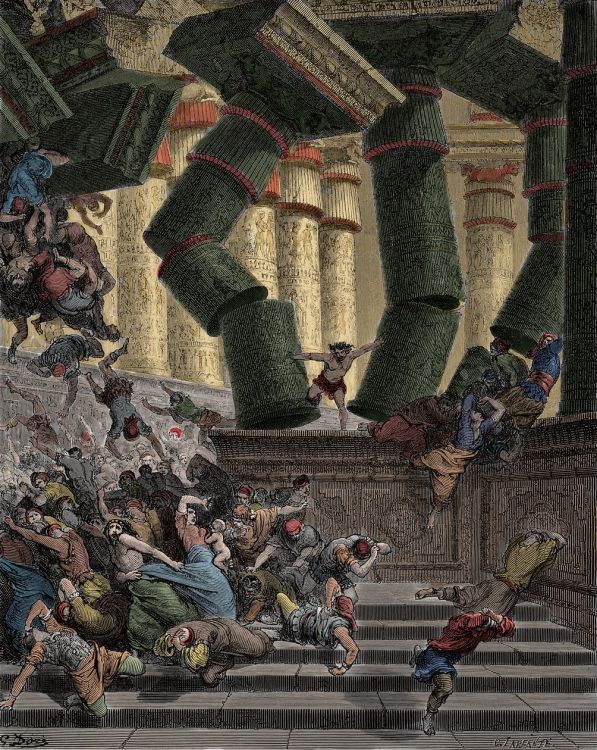
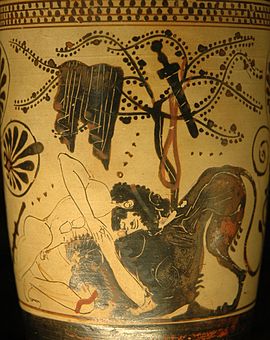
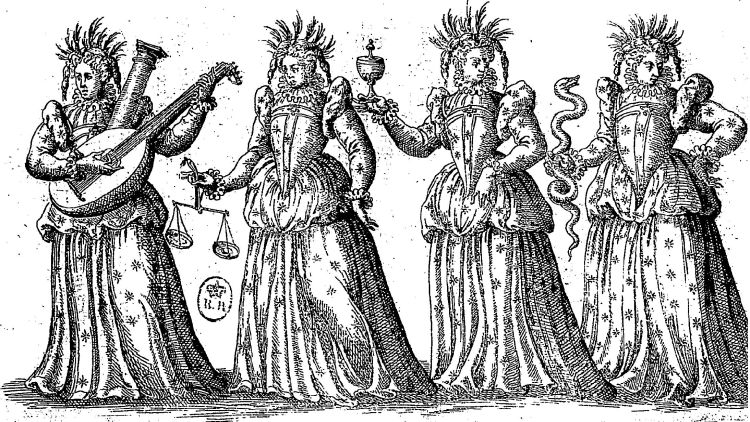
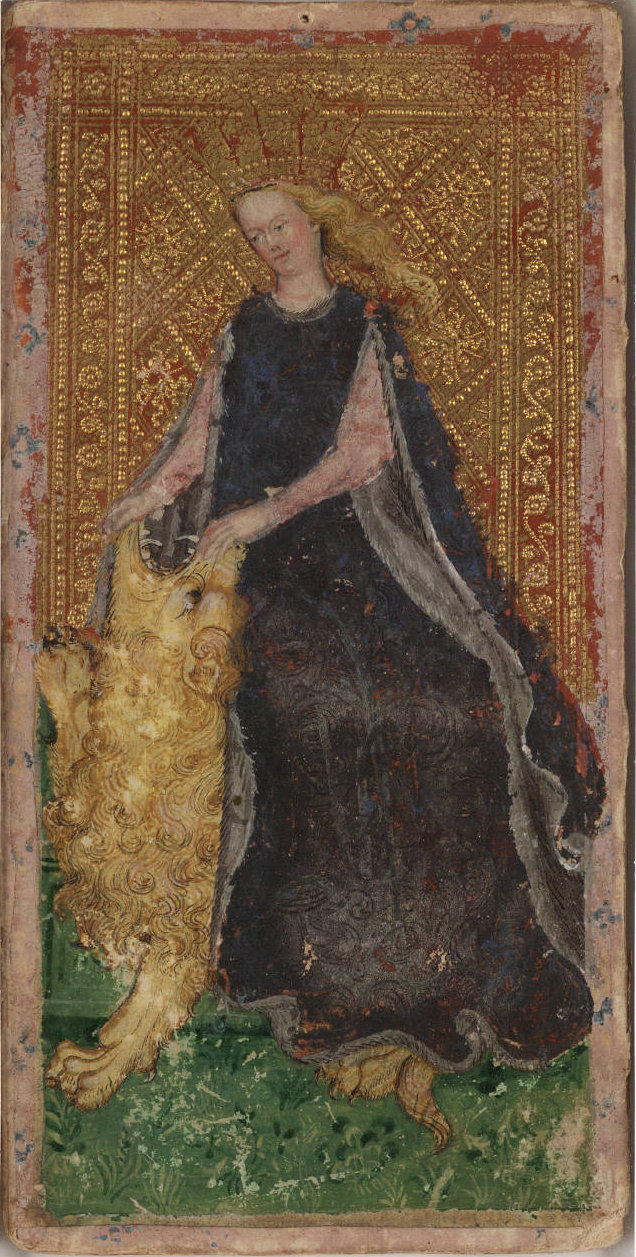
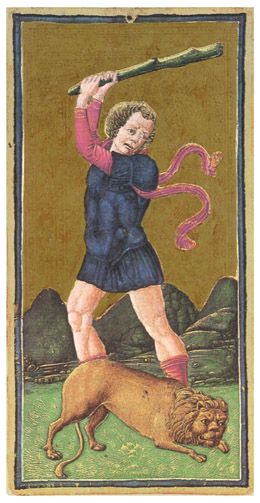
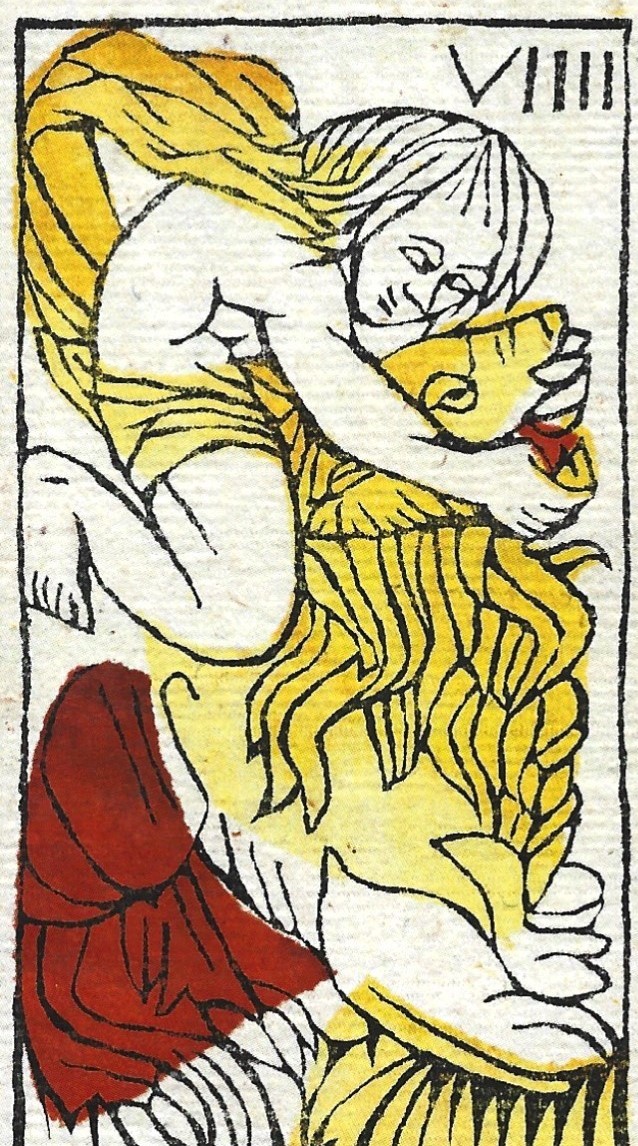
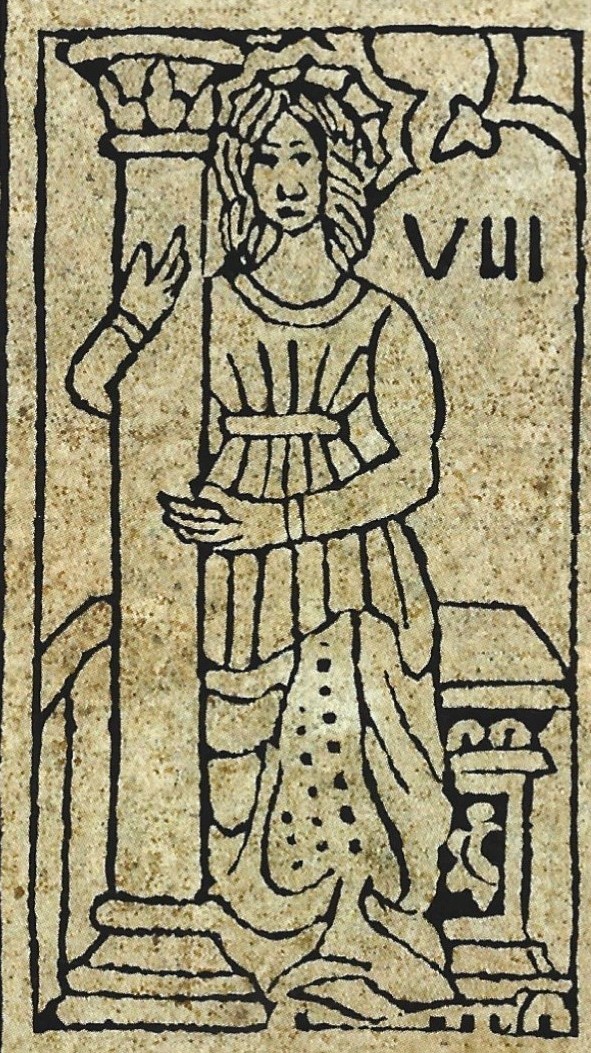
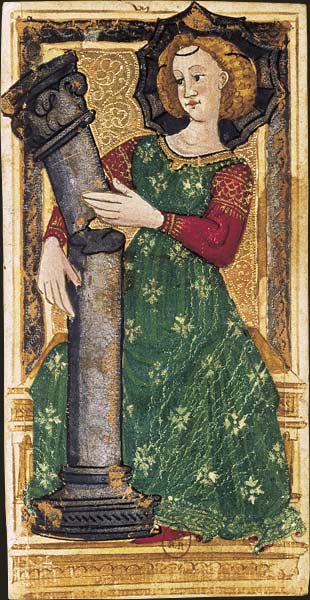
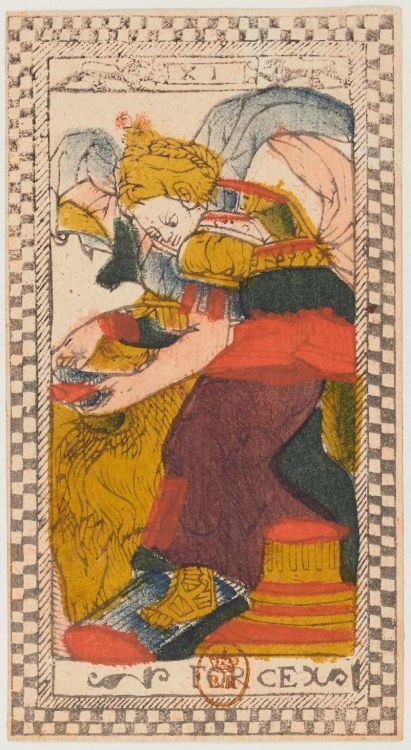
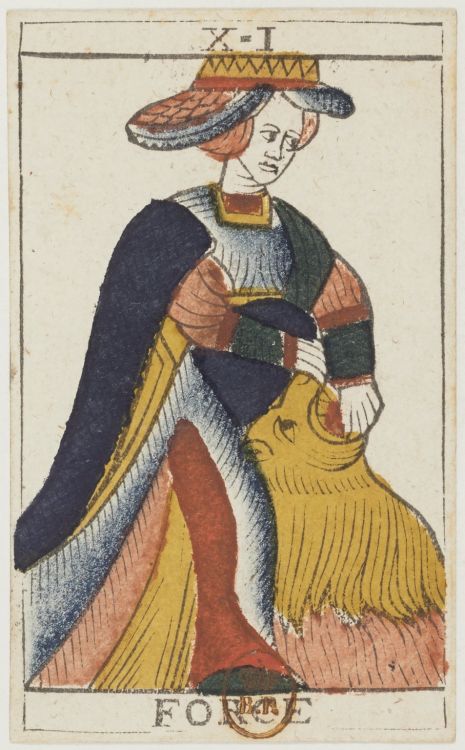
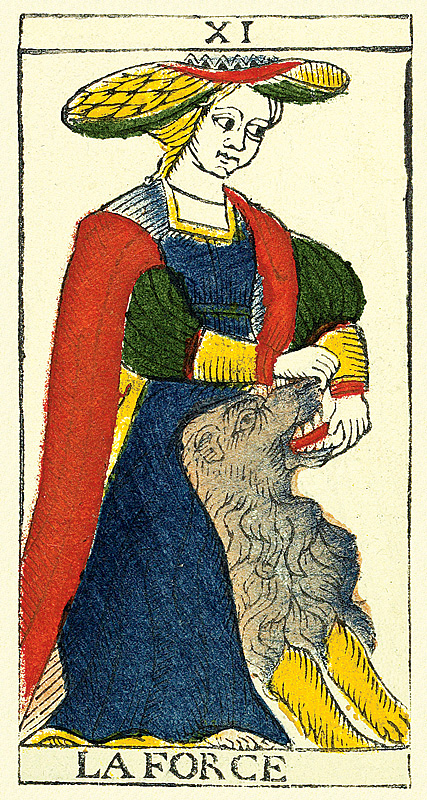
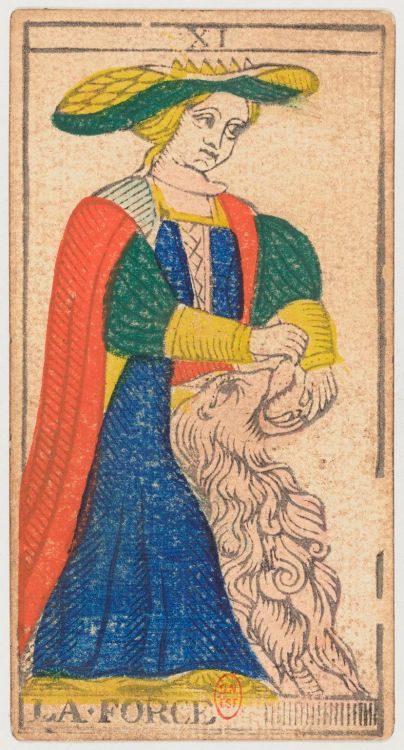
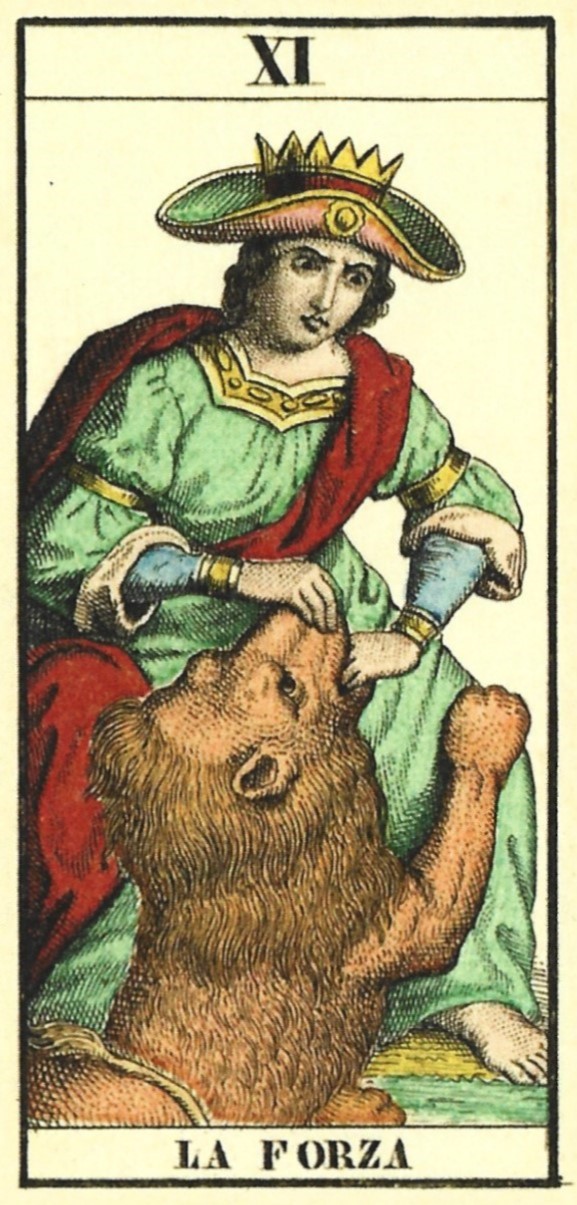
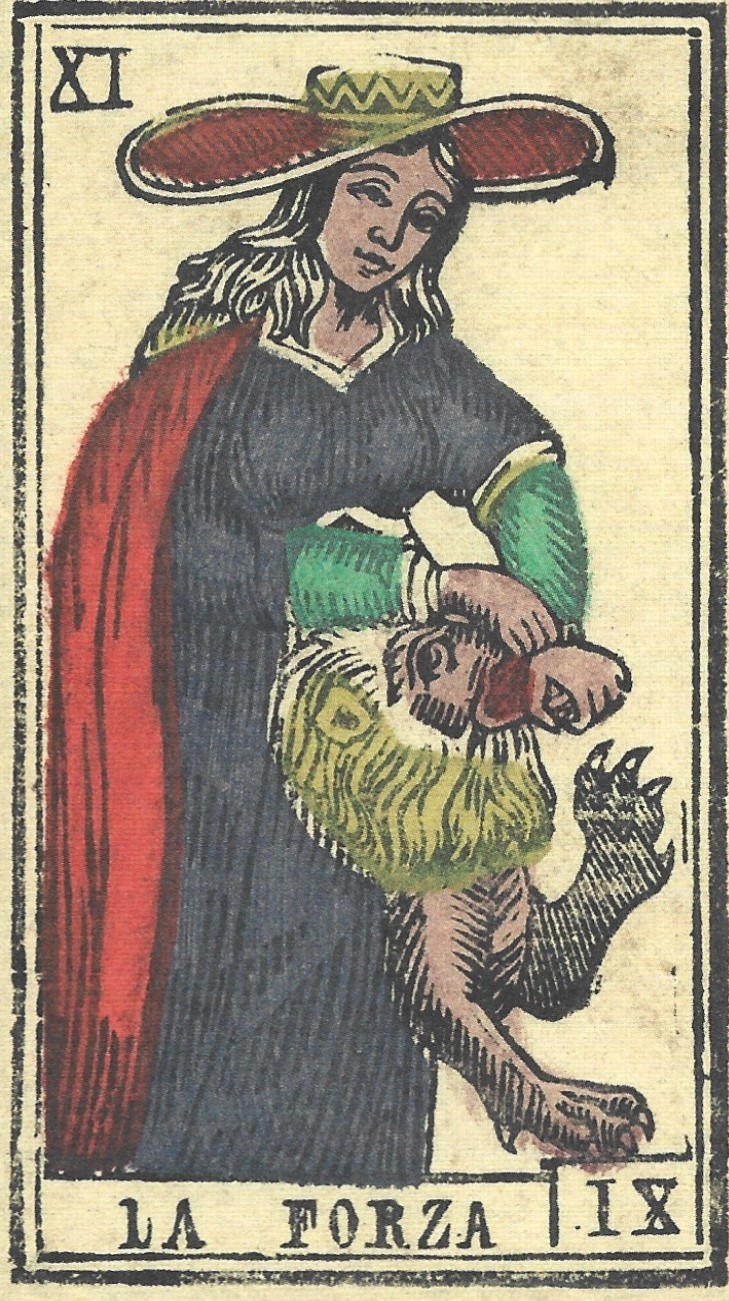
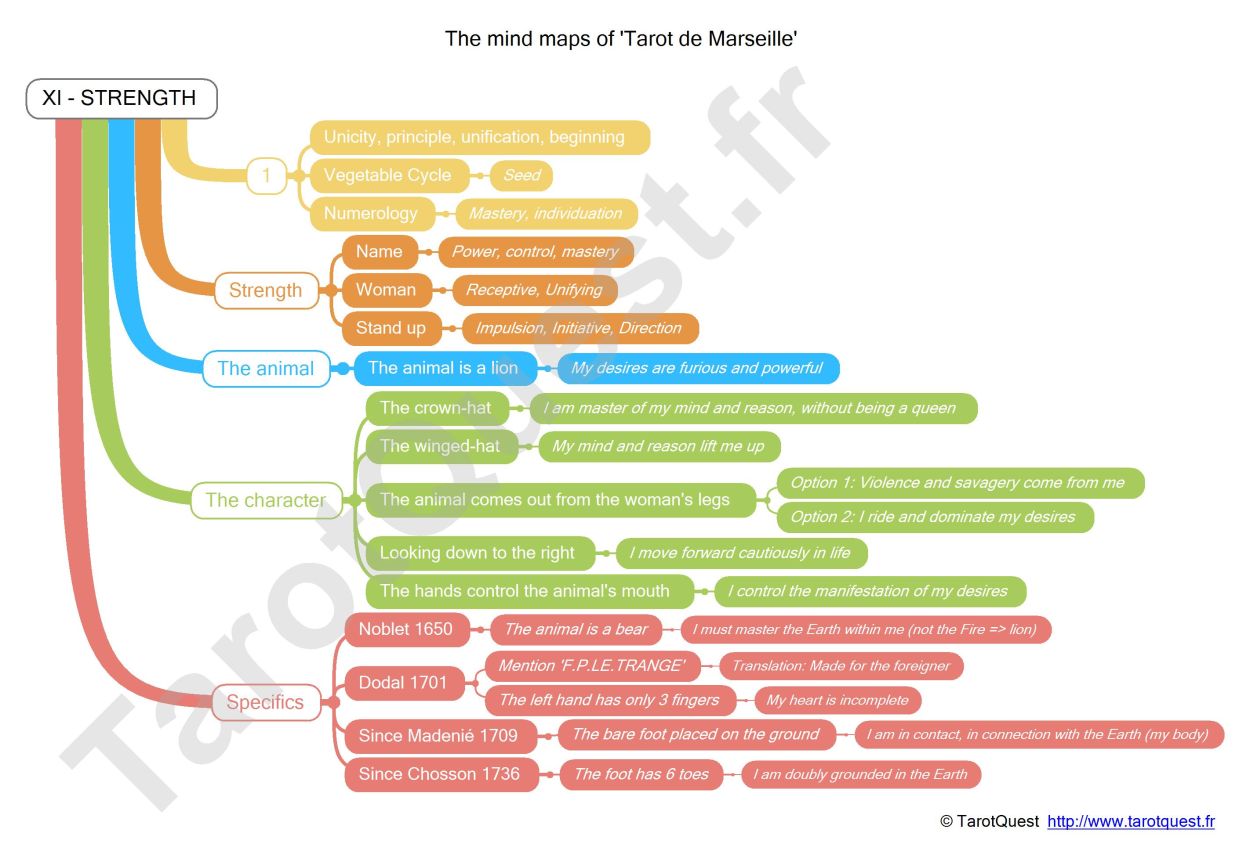
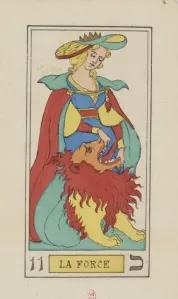
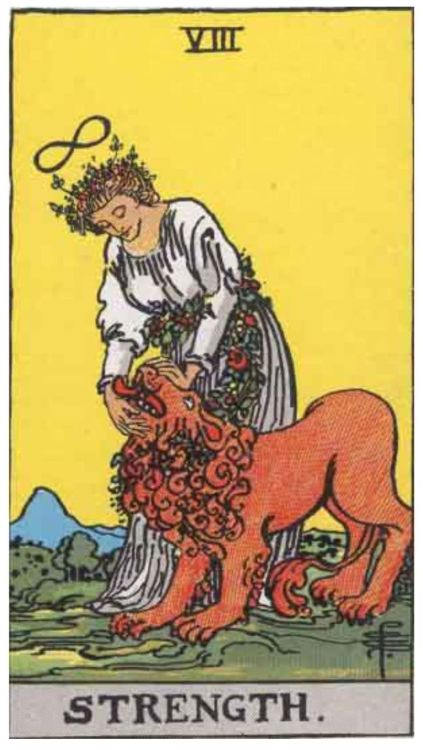
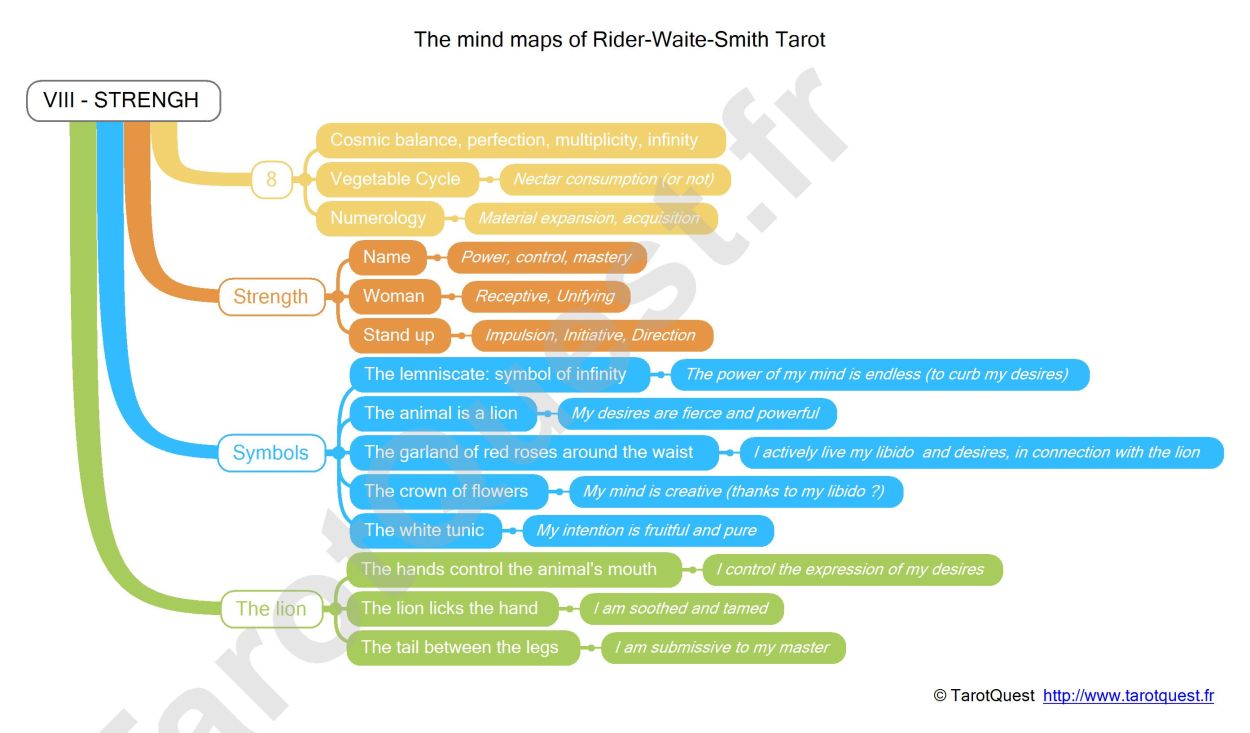
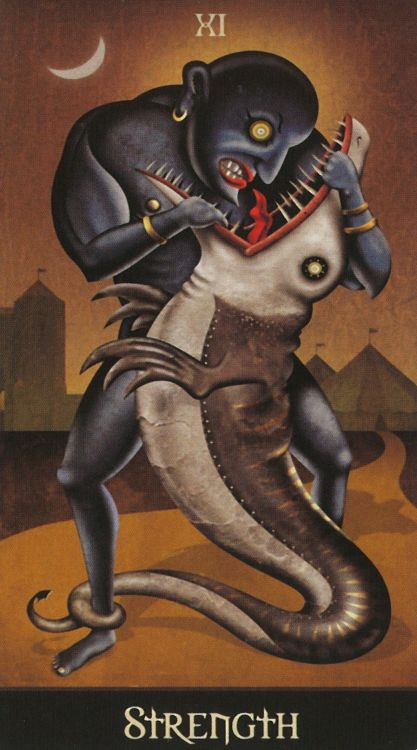
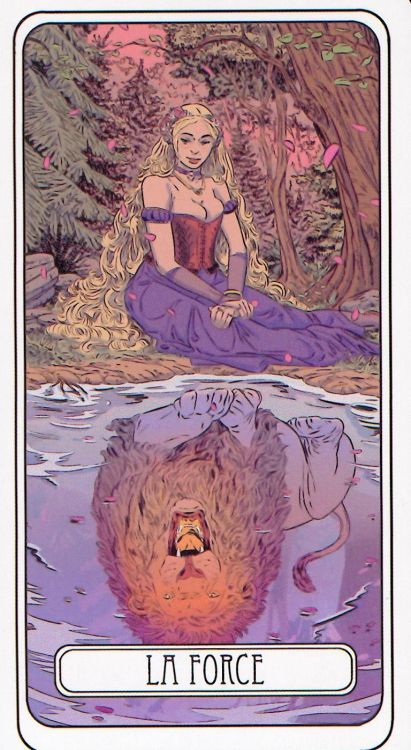
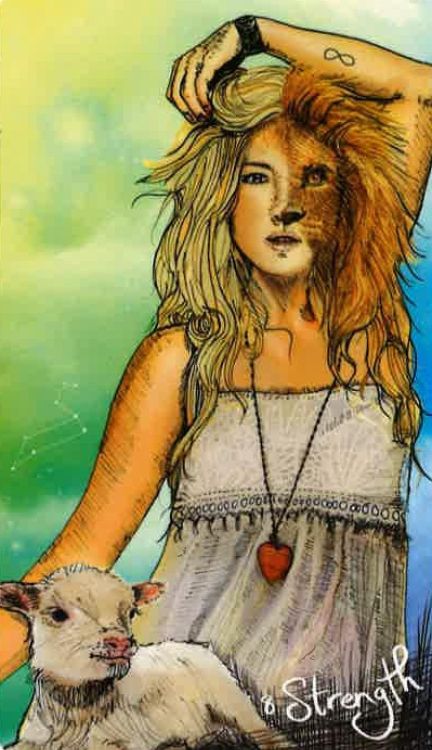
Copyright © TarotQuest.fr